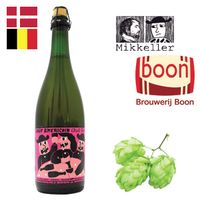search
clear

starstarstarstarstar_border 3,82 
7.837 Valoraciones
Boon / Mikkeller Oude Geuze Goût Américain
Gueuze 6.5 º
Oude Geuze Goût Américain
You may or may not have seen this recently; either way I’d still like to let you know there’s a new Oude Geuze we’ve made with Mikkeller!
In this case this geuze is more of a wink and nudge towards the american tries/experiments
You may or may not have seen this recently; either way I’d still like to let you know there’s a new Oude Geuze we’ve made with Mikkeller!
In this case this geuze is more of a wink and nudge towards the american tries/experiments
... Ver más
Comprar Boon / Mikkeller Oude Geuze Goût Américain en 1 tienda

 Drink Online - Drink Shop
Drink Online - Drink Shop
Mikkeller Boon - Gout Americain 375ml
Oude Geuze, alc. 6,5%
Sin Stock
Mikkeller Boon - Gout Americain 375ml - Drink Online - Drink Shop

Sin Stock

Productos ofrecidos por Drink Online - Drink Shop
Sin Stock - Drink Online - Drink Shop
Oude Geuze, alc. 6,5%
Comprar Boon / Mikkeller Oude Geuze Goût Américain. Cerveza del tipo Gueuze elaborada por Brouwerij Boon en Bélgica.
https://birrapedia.com./boon--mikkeller-oude-geuze-gout-americain/p-sk/f-60b106b21603da4954834d75

